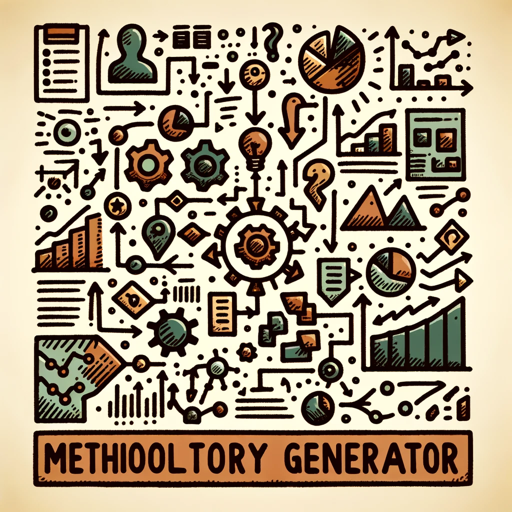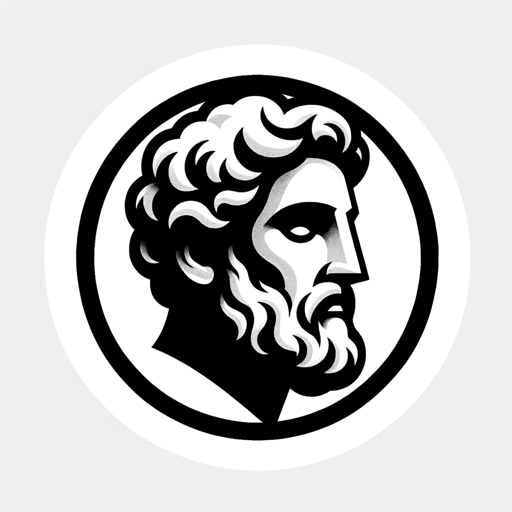THEORETICAL FRAMEWORK-AI-powered academic research tool.
AI-Powered Academic Insight.
PASTE TOPIC/OBJECTIVE/WHATEVER
Related Tools
Load More
Evidence-Based Practice
AI Assistant for Critical Appraisal of Scientific Articles

TCC Expert
Assistente de Trabalhos de Conclusão de Curso para Universitários

Methodology Generator
Expert in diverse methodology methods, offering tailored and detailed suggestions.

Consensus Search
Academic consensus finder in scholarly debates.

Digital-Don
Drawing from 2500 years of learning theorists from the 'Greeks to the Geeks', ask me anything on LEARNING THEORISTS , LEARNING THEORIES. and LEARNING TECHOLOGIES

Social Science Theorist
Academic Social Science Expert
20.0 / 5 (200 votes)
Understanding THEORETICAL FRAMEWORK
THEORETICAL FRAMEWORK is designed to serve as a robust platform for developing, articulating, and applying theoretical models across various disciplines. It is specifically tailored to support in-depth research and academic endeavors, particularly for PhD candidates and researchers aiming to construct well-founded theoretical frameworks for their studies. The primary purpose is to provide a structured, comprehensive approach to integrating existing theories and models with empirical research, thereby enhancing the quality and rigor of academic work. For instance, a researcher studying social behaviors might utilize THEORETICAL FRAMEWORK to align their empirical data with established social theories, ensuring their research is grounded in a recognized theoretical context. This facilitates not only the organization and synthesis of existing knowledge but also the identification of gaps and opportunities for further research.

Core Functions of THEORETICAL FRAMEWORK
Theory Development and Articulation
Example
A researcher in psychology developing a new model to explain cognitive biases can use THEORETICAL FRAMEWORK to structure their theoretical propositions and align them with existing literature.
Scenario
In a scenario where a PhD student is exploring the impact of digital media on attention spans, they can use the platform to develop a new theoretical model by integrating insights from existing cognitive and media theories, thereby providing a solid foundation for their empirical investigation.
Literature Integration
Example
A sociology scholar working on the effects of urbanization can use THEORETICAL FRAMEWORK to integrate various sociological theories on urban development and community dynamics.
Scenario
For instance, if the scholar is examining the impact of urban sprawl on social capital, they can use the platform to draw connections between classical theories of social networks and contemporary research on urbanization, ensuring a comprehensive review and synthesis of relevant literature.
Gap Analysis and Research Opportunities
Example
An education researcher identifying gaps in existing theories of learning styles can utilize THEORETICAL FRAMEWORK to systematically review current models and highlight areas lacking empirical support or theoretical clarity.
Scenario
Imagine a scenario where an education PhD candidate is investigating the efficacy of blended learning environments. They can use THEORETICAL FRAMEWORK to analyze existing theories of learning and technology integration, pinpointing specific areas where empirical data is sparse, thereby directing their research efforts to address these gaps.
Target Users of THEORETICAL FRAMEWORK
PhD Candidates and Academic Researchers
PhD candidates and academic researchers are the primary users of THEORETICAL FRAMEWORK. These individuals benefit from its structured approach to theory development, literature integration, and gap analysis, which are critical for producing high-quality, rigorous academic work. For example, a PhD student working on a dissertation in economics can use the platform to ensure their theoretical framework is robust and well-supported by existing research, facilitating a smoother and more credible research process.
Research Institutions and Universities
Research institutions and universities can leverage THEORETICAL FRAMEWORK to support their scholars in developing comprehensive theoretical models. By providing access to this platform, institutions can enhance the quality of research output and promote a culture of rigorous academic inquiry. For instance, a university's research center focusing on environmental studies might adopt THEORETICAL FRAMEWORK to help their researchers align their empirical work with established environmental theories, ensuring their studies contribute meaningfully to the field.

Guidelines for Using THEORETICAL FRAMEWORK
Step 1
Visit aichatonline.org for a free trial without login, also no need for ChatGPT Plus.
Step 2
Familiarize yourself with the tool’s interface and available features by exploring the dashboard.
Step 3
Identify your specific use case, such as academic writing, research assistance, or theoretical modeling.
Step 4
Input your query or the topic you are researching into the tool, ensuring to provide as much detail as possible for a comprehensive output.
Step 5
Review the generated content, utilize the editing features for refinement, and integrate the output into your work as needed.
Try other advanced and practical GPTs
이태원의 마지막 목격자 🌃 - 추리 게임 Based in Seoul 🇰🇷
Solve mysteries with AI-powered visuals.
주식 투자 올인원
AI-powered stock analysis and insights

📈한국 주식 투자 AI📈
AI-driven insights for Korean stocks.

도전! 산에서 살아남아라 ⛰️ (Voice ver.)
Master Mountain Survival with AI.

도전! 핵 아포칼립스에서 살아남아라 ☢️
Survive the apocalypse with AI guidance.

백작가의 막내딸이 힘을 키움 🪄 Ver 5.1
Grow, Adventure, and Save Your World

Herbal Doctor
AI-powered herbal medicine insights.

Alex Smith English Teacher
AI-powered advanced English tutor

Stoic
Empower your life with AI-driven Stoicism

中日商务助理
AI-powered assistant for Sino-Japanese business.

Viajante10x | Planejador de Viagem
AI-powered custom travel planning

Datenschutz Assistent
AI-Powered Data Protection Compliance
- Academic Writing
- Research Assistance
- Literature Review
- Essay Generation
- Theoretical Modeling
Frequently Asked Questions about THEORETICAL FRAMEWORK
What is THEORETICAL FRAMEWORK?
THEORETICAL FRAMEWORK is a sophisticated AI-powered tool designed to assist in academic writing, research, and theoretical modeling by providing detailed and well-cited content based on user queries.
How can I start using THEORETICAL FRAMEWORK?
You can start using THEORETICAL FRAMEWORK by visiting aichatonline.org, where you can access a free trial without the need for login or ChatGPT Plus.
What are common use cases for THEORETICAL FRAMEWORK?
Common use cases include writing PhD theses, conducting literature reviews, creating theoretical models, generating comprehensive research summaries, and producing detailed academic essays.
Does THEORETICAL FRAMEWORK require any special prerequisites?
No special prerequisites are required. However, having a clear understanding of your research topic and objectives can help in generating more precise and relevant content.
What makes THEORETICAL FRAMEWORK different from other AI writing tools?
THEORETICAL FRAMEWORK stands out due to its focus on providing deeply cited and academically rigorous content, tailored specifically for academic and research purposes.